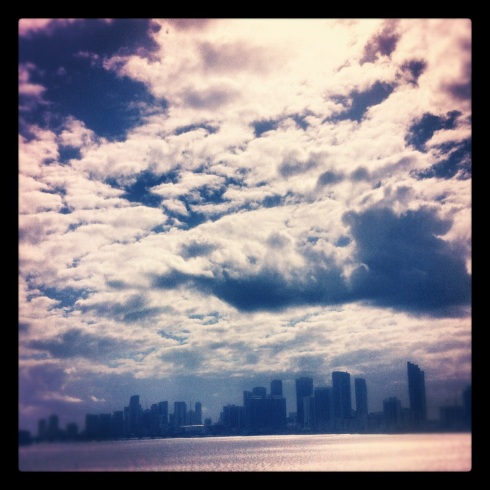
Miamiiiiiii
This weekend I stopped over in Washington DC to see two of my favorite people get married. As I write this I am on the plane heading back to Dallas. I hear it is cold in Dallas! And there was snow earlier today?? What the??
Last week in Miami it was go-go-go and my amazing Miami mane was big-big-big (not enough hair product in this world to tame it). One of the highlights from the trip was visiting the De La Cruz Collection.
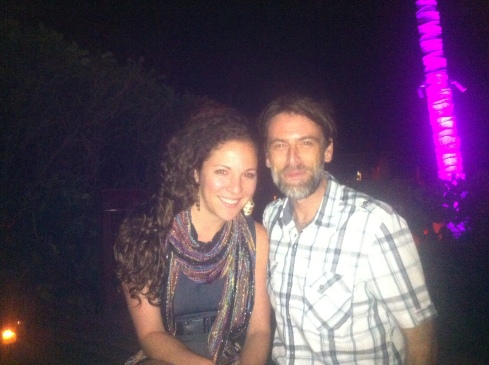
Me, my hair and Rob Sparrow Jones
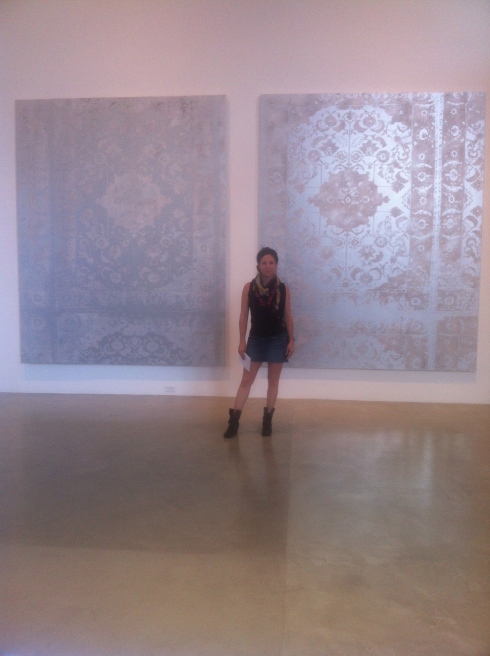
Me with Rudolf Stingel at De La Cruz Collection, Miami
In 2009, collectors Rosa and Carla De La Cruz opened up a 30,000 square foot space in Miami’s Design District to house their collection and serve as an extension of their home. They rotate exhibitions a couple times a year and they have learning programs – artists and curator talks, workshops, school tours, etc.
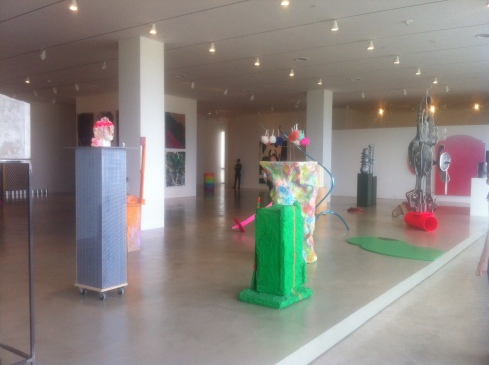
Sculpture garden at De La Cruz Collection, Miami.
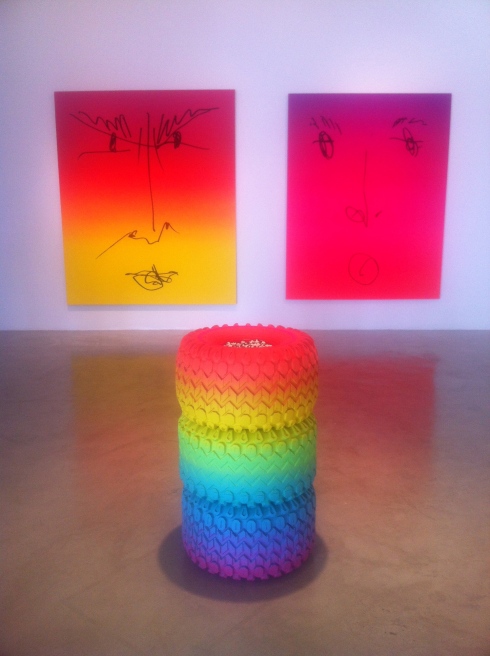
Rob Pruitt at De La Cruz Collection, Miami.
Tuesday morning we visited the collection. The space itself is one of those buildings that reminds you that good architecture can make you feel all warm and fuzzy inside. It’s white walls and large open spaces are the perfect home for Rudolf Stingel paintings, Aaron Curry installations, major works by Gabriel Orozco and others. We wandered the three floors and then went out for lunch at the very popular Michael’s in the Design District. The weather was beautiful and the food was tasty.
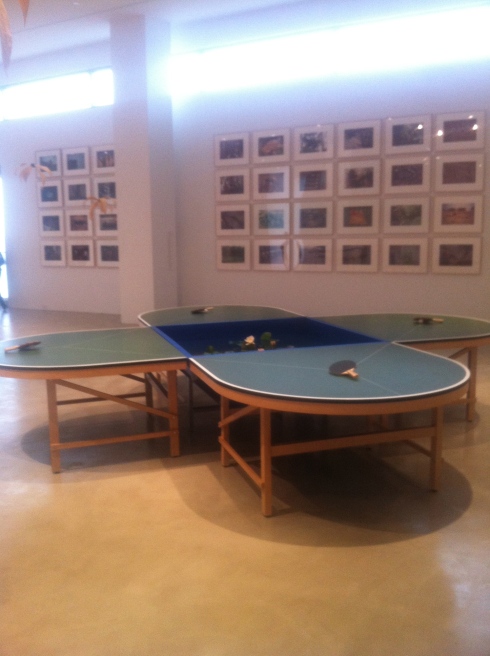
Gabriel Orozco installation and photographs at De La Cruz Collection, Miami.
From there we stopped at the Bass Museum for a quick preview of their current exhibition “The Endless Renaissance” – an exhibition with 6 solo projects by artists including Walead Beshty, Hans-Peter Feldman, Barry X Ball and others.
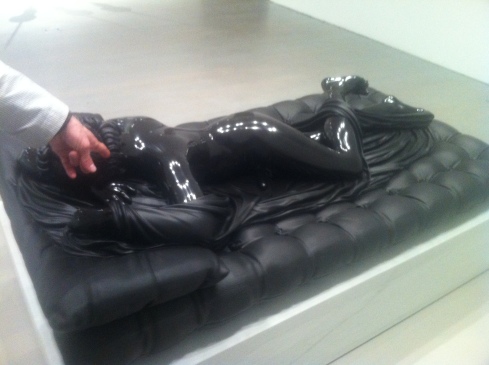
Barry X Ball sculpture at the Bass Museum (hermaphrodite)
After walking the length of the Bass Museum’s courtyard, we walked over to see the project by Cuban artist duo Los Carpinteros. This was an impressive structure built as a bar in conjunction with Absolut Art Bureau. One of the Absolut art people spoke to our group about the project and then we had the privilege of meeting one of the artists (unfortunately the other one did not make it through customs…I will not comment on how fucked up I think this is).
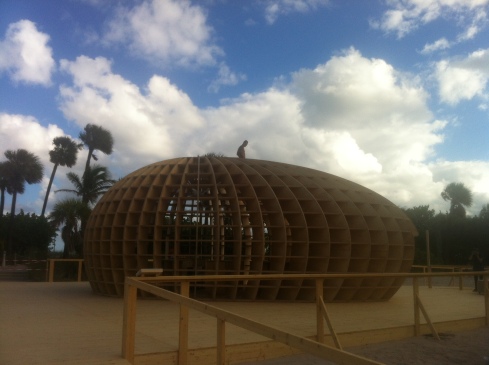
Los Carpinteros bar project in conjunction with Absolut Art Bureau
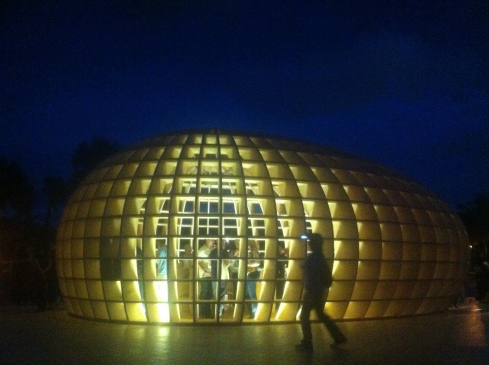
Los Carpinteros at night
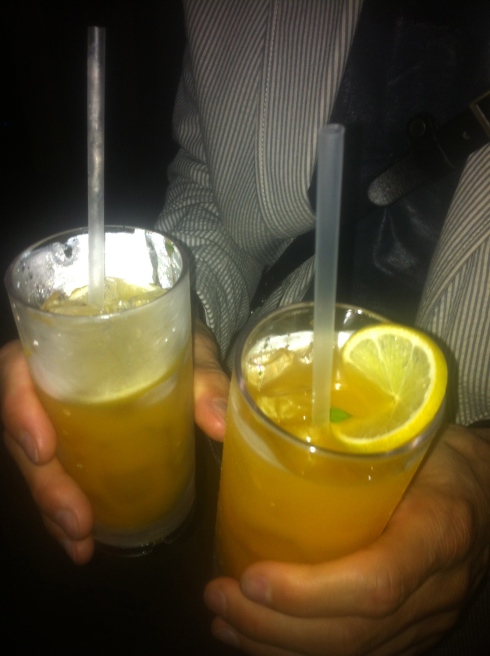
Drinks being served at the Los Carpinteros bar…carrot juice, vodka, cilantro deliciousness
From there we stopped at the Cisneros Foundation and got a preview and a tour from the collaborating curators Moacir dos Anjos and José Roca.
Our last stop of the day and one of the super highlights was visiting Rosa and Carlos De la Cruz’s home. Rosa opened up her home for our group and gave us a personal tour of her collection. Essentially the home was built for the collection. Somewhere around 15,000 square feet, the house only has 1 bedroom. We were served champagne and yummy little bites as Rosa walked us through rooms of Sigmar Polke paintings, Frank Gehry furniture, German paintings and most impressive an entire second floor dedicated to an installation by Assume Vivid Astro Focus – a collaborative comprised of artists Eli Sudbrack and Christopher Hamaide-Pierson.
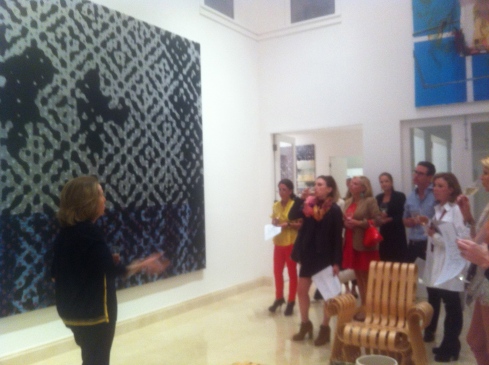
Rosa De La Cruz giving us a tour of her collection (in front of a Sigmar Polke painting)
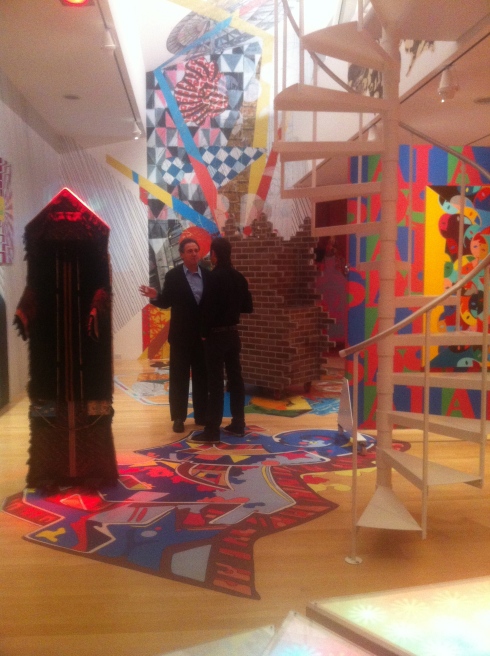
Assume Vivid Astro Focus installation at the De La Cruz home in Key Biscayne
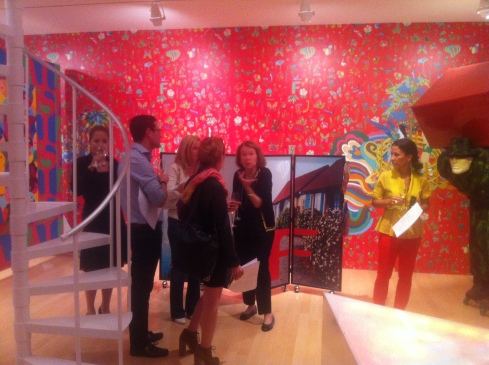
The group enjoying the AVAF installation
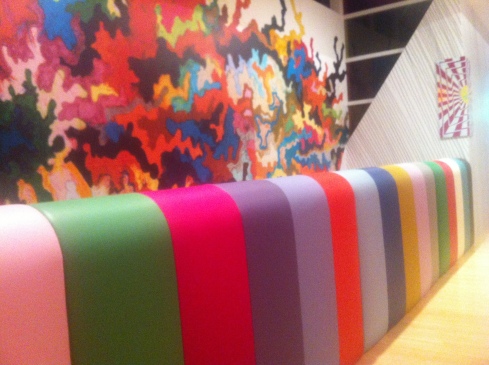
AVAF installation
We ended this action-packed day with a cold beer and sushi.
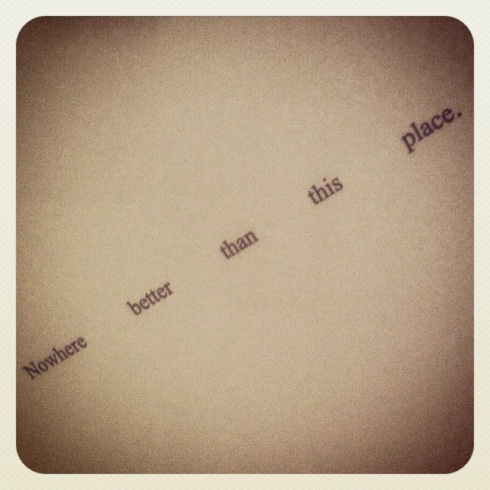
Felix Gonzalez Torres at De La Cruz Collection, Miami.
Love you…bye bye.







